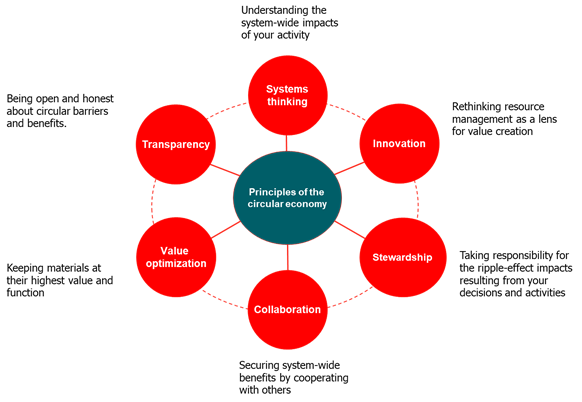
Essential
The food industry is in the spotlight. Conserving Earth’s resources has become a vital challenge, and the traditional linear ‘take, make and dispose’ model is broken. Even relying on materials that can be recycled by the end user—once regarded as an environmental saviour—is now often seen as a ‘lazy’ option.
Consumers are more eco-conscious than ever and very careful about their food and beverage choices. This puts food businesses under pressure to embed sustainable practices into every part of their supply chain; from farm to fork.
Being sustainable isn’t just about doing the right thing for the environment. It can also be a way to grow brand affinity with your customers or even save money. You’re probably aware of the opportunities and challenges; making the shift towards circular, sustainable practices isn’t easy.
True sustainability isn’t linear, but circular where resources are recovered at the highest possible quality, reused and kept in use for as long as possible. This approach to managing resources is known as a circular economy.
It can be applied to everything from food processing to packaging. Done right, it cuts waste, is much more efficient, adds lasting value to your business and gives products a competitive advantage. Additionally, it can boost a business’ reputation, by demonstrating that it listens what their customers say is important.
Not easy, but worth it
So how can food companies contribute towards the circular economy?
If you’re thinking a set of ‘how to’ instructions would help make it easier, the news is good. The standard BS 8001 Circular Economy is a business improvement standard that can get food sector companies started on the path. It includes detailed advice on how to integrate sustainable practices into their operations.
It explains the six principles of the circular economy and provides guidance on how to make each one a core part of business operations.

Source: BS 8001 publication.
BS 8001 also draws on ISO’s environmental management system (EMS) standard. In fact, if your organization has implemented a robust ISO 14001 EMS, some of the more challenging work associated with adopting a circular economy may have been done when you considered the lifecycle perspective of your product(s) or service(s) in clause 6.1.2 Environmental aspects.
ISO 50001 Energy Management Systems is another international standard that can help food sector businesses lay the groundwork to becoming a more circular business or improve its results. No matter where your organization fits in the farm-to-fork journey, you’re probably aware that you use more fuel to get the job done than most other industries. Not only can ISO 50001 help you align with some of the principles such as innovation and stewardship, it can help your organization stabilize energy costs; in the long-term many organizations experience a cost savings that they can pass on to their customers or shareholders.
The way forward is to go in a circle, but despite its challenges, to summarize the benefits of implementing a circular economy in the food industry include:
- Increased brand reputation through the recognition of customers’ values
- Enhanced stakeholder relationships
- Reduced use of material and energy to lower costs
- Potential development of new/innovative resources
- Mitigating the risks associated with fluctuating costs of resources
Now that’s food for thought.